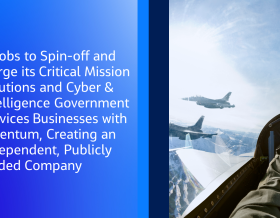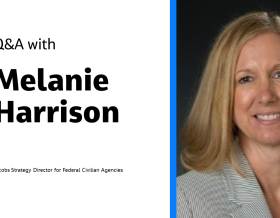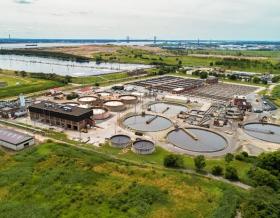Electrifying Airport Ecosystems
Significant Power Infrastructure Investments Needed to Meet Growing Electrification Demands Nationwide
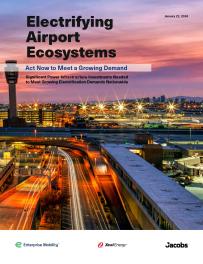
Airports are major economic drivers, contributing to more than seven percent of the United States’ (U.S.) gross domestic product in 2023. Airports and related services are also rapidly electrifying. The growth in electricity demand – and the time required to build power infrastructure to deliver it – means there is significant work to be done now to prepare for the future.
Electrifying Airport Ecosystems, a new study from Enterprise Mobility, Xcel Energy and Jacobs, aims to raise awareness of the significant power infrastructure investments needed to support electrification in airport ecosystems nationwide.
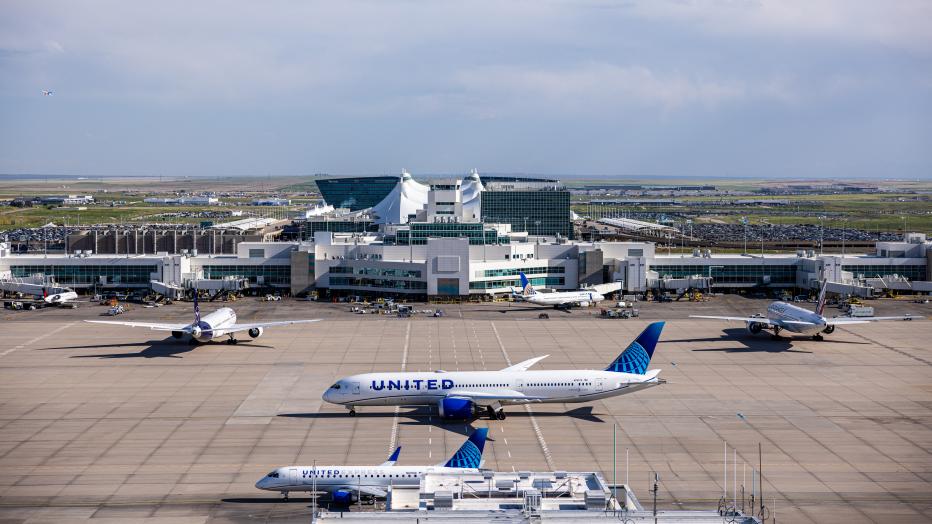
Airports are unique centers of mobility and economic activity. According to the Airports Council International North America, they contributed to more than 7.2% of gross domestic product in the United States in 2023. National and international travel patterns are reaching pre-pandemic levels and airports are recording record numbers of travelers passing through their gates, with travel poised to grow further. Airports are key movers of both people and goods, with many major supply chains moving goods through the air domestically and internationally.
Meanwhile, the electric vehicle (EV) transition is well underway. In its World Energy Outlook 2023, the International Energy Agency estimated that 50% of all U.S. car registrations will be EVs in 2030. This may accelerate as the cost of lithium-ion batteries decrease dramatically, setting the stage for lower-cost EVs.
On each the public and private sector side, city transit agencies and private fleet operations have begun electrifying fleets, some of which serve airports. Vehicles like aircraft tugs also are active across airports and critical for operations. And it’s not only vehicles— decarbonization of energy like heat will also contribute to growing electricity demand.
At a macro level, nearly 118 countries committed to a Global Renewables and Energy Efficiency Pledge at COP28 to work together to increase the world’s renewable energy capacity by 3x to at least 11,000 GW by 2030. In the United States, the federal government, along with each and every state, set targets as well.
With bold commitments in place combined with staggering statistics on the importance of airport ecosystem vitality to support future energy needs, it’s critical to look at the system that will underpin the achievement of these lofty goals—the electricity grid.
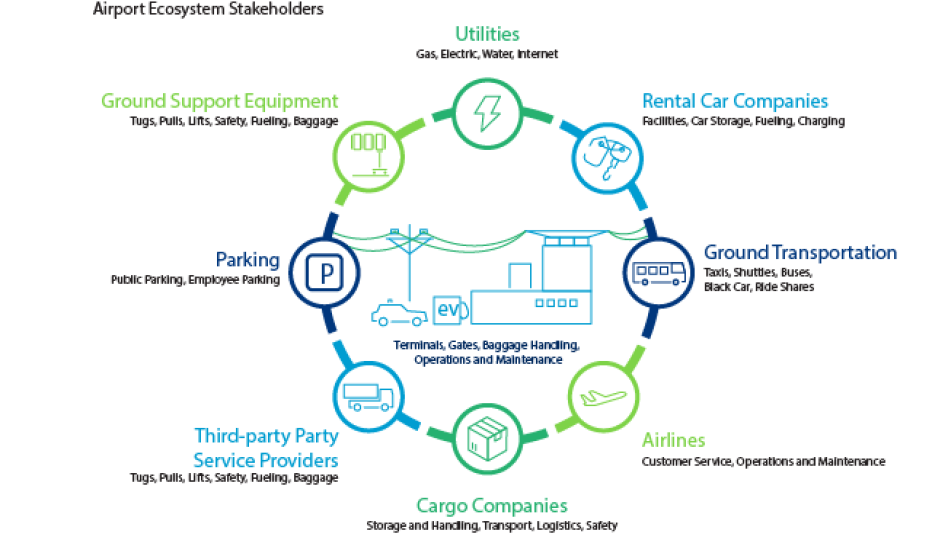
A collective problem
What does this mean for airports across the country, and we who rely on them? As transit and fleet owners that operate in and around airports electrify their vehicles, and as utilities decarbonize heat, the scale and pace of electricity demand is growing, and the stage is set for an unprecedented demand for power.
As this demand increases, so do risks of travel and supply chain disruption. Grids across the U.S. are shakily handling increases in demand. At airports, a working grid is critical to moving goods and people—think trams that connect passengers to terminals, the telecommunications that keep operations safe, and companies like FedEx and Amazon getting goods to customers reliably. Disruption would affect an array of industries and people and create barriers to economic growth, sustainability and innovation.
Airports are not creating this demand so much as responding to the needs of airport users. In other words, this is a collective problem that will affect stakeholders across mobility, utilities, federal and state government, and private industry—and so requires a collective solution.
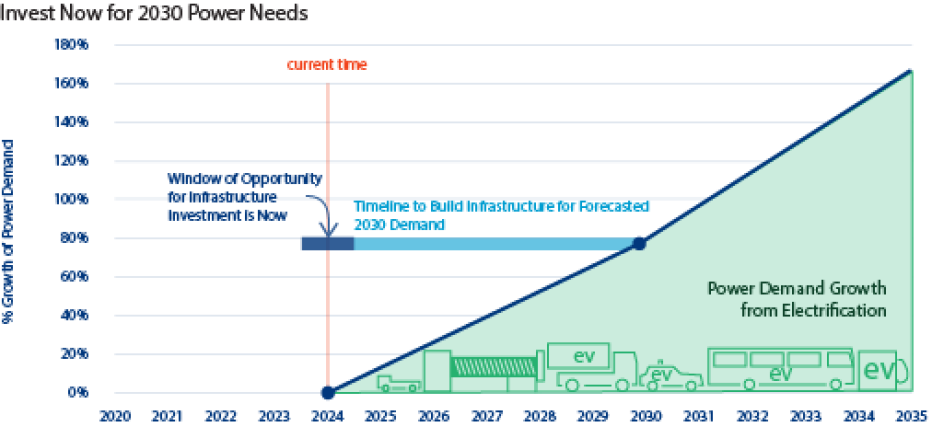
To meet demand in 2030, invest and build now
In the course of our study, Jacobs found that by 2030, airport ecosystems that are electrifying will nearly double their current peak power demands. By 2050, airport ecosystems will require nearly five times more power than their current peak demand. Meeting these needs will take significant new and upgrade power infrastructure, which requires significant investment.
However, time is short. Large-scale infrastructure projects of the scale required by most airports take around seven years on average to complete—and with 2030 seven years away, now is the time to begin.
Investments like the U.S. Department of Energy’s recently announced $39 million in grid modernization projects are a great start. But more is needed. And because airports are ecosystems with many stakeholders, collective effort will be key. Airports, industries, utilities, regulators and policy leaders need to come together to plan and implement the solution to secure our collective economic future.
“Airports are ecosystems for commerce and mobility. As airport operations require more electricity to function, airports will face continued unprecedented demand for power. Jacobs interpreted a wide range of data and engaged stakeholders across the airport ecosystem to come to this report’s conclusion — that now is the time for sensible investments in the power infrastructure airports will need to operate efficiently, sustainably and with economic drivers in mind.”
What’s next?
Such low- and least-regret infrastructure investments may be costly in the short term, but bring long-term benefits of grid capacity, stability and resiliency. Best of all, the benefits don’t end at the airport gates—think cleaner air, better mobility, more jobs and economic activity, and prosperity for cities and the country.
But the critical window of opportunity is narrow—the nationwide transition to EVs is accelerating, and grids all over are struggling to keep up with the scale and pace of change.
No one entity can fix this alone. This is not just about airports, but the entire ecosystem that surrounds and feeds them—stakeholders across federal and state government dealing with economic, transportation, and energy policy; utilities; and private enterprise.
Because large-scale infrastructure takes years to come alive, the first low-risk, low-regret investments should start now—and everyone at risk should join in the conversation.
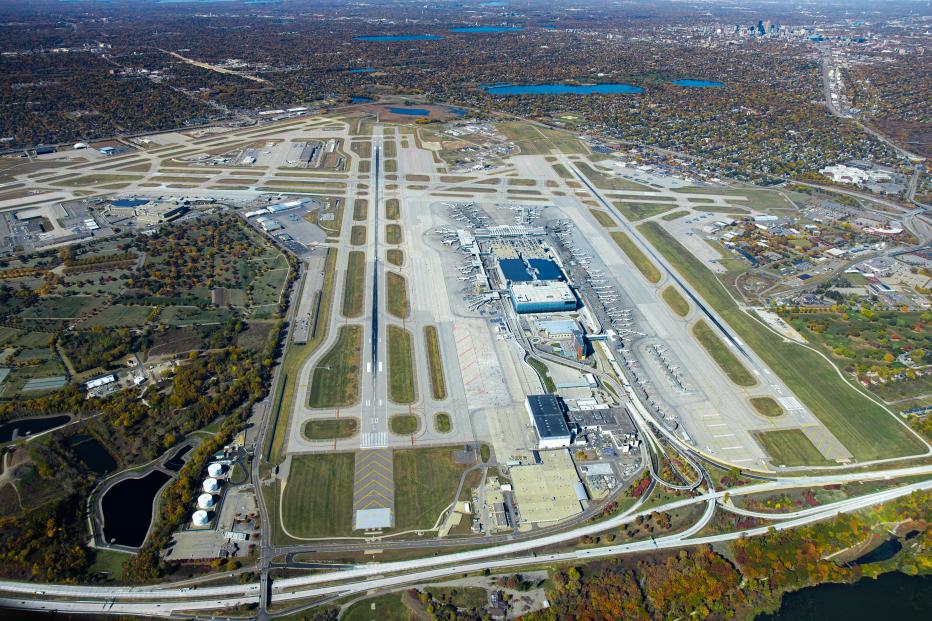
“As the scale and pace of electricity demand grows, airports and their wider ecosystems are at risk of disruption. This is a collective problem that requires urgent action from stakeholders across mobility, utilities, federal, state and private industry—and our findings here can begin the conversation about the low-risk infrastructure investments we need to keep pace with change.”
Did you know?
-
7.2 %
U.S. airports’ contribution to national GDP in 2023
-
50 %
percentage of electric car registrations in the U.S. by 2030 according to the International Energy Agency’s World Energy Outlook 2023
-
5 x
airports will need five times the power currently available to maintain efficient operations in 2050
-
7
years = average time it takes to finish large-scale infrastructure
About the authors
Graeme Cooper, Global Vice President, Energy Transition

From developing and operating wind farms across the U.K., to converting his own 600-year-old farmhouse into an “effectively carbon neutral” property, Jacobs Global VP, Energy Transition Graeme Cooper is implementing strategies to reduce his carbon footprint in his personal and professional life. Graeme recently relocated from the U.K. to Boston, Massachusetts, where he’s helping energy and power businesses match or exceed the scale and pace of the energy transition. He’s also helping non-energy businesses, recognizing that energy and power impacts all sectors when it comes to the energy transition.
From upstream clean generation, mid-stream utility networks and markets, to downstream clean energy consumption, Graeme is helping our clients deploy those strategies covering large-scale infrastructure, asset management, real estate, grid services, operating models and organizational structures. He’s using his 20+ years of experience consulting and advising on policy, regulatory, climate and market issues to innovate solutions for both private and public-sector clients around the world.
Steve Pelham, Vice President, Aviation, Americas
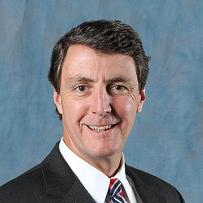
Vice President of Aviation - Americas Steve Pelham leads Jacobs’ aviation solutions across the Americas, providing strategic advisory consulting and project delivery oversight services to our clients and aviation project teams. Leveraging more than 30 years of experience in airport planning, environmental, design, engineering, architecture, security, and program management and construction management (PM/CM), he delivers solutions and services to respond to our client’s challenges.
Steve supports international, domestic and military airport projects of all sizes and levels of complexity across the U.S. and around the world. Steve’s commitment to and passion for aviation has driven his long-term involvement in numerous professional organizations focused on the latest technologies, project approaches, best practices and emerging issues.
Steve has participated in various committees with the American Association of Airport Executives (AAAE), Airports Council International and Airport Consultants Council (ACC). He is currently a member of the Aero Club of Washington and serves on the boards of ACC, ACI World Business Partners, the International Association of Airport Executives, AMAC, and Tony Janus Distinguished Aviation Society.

